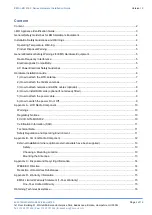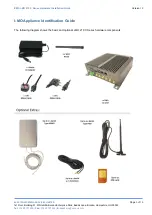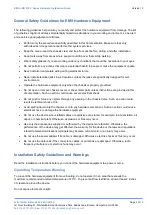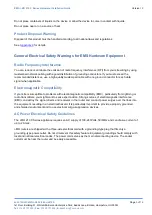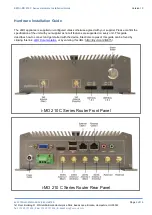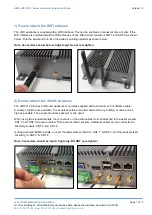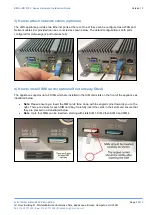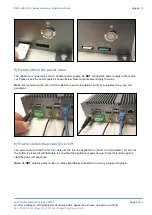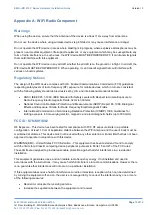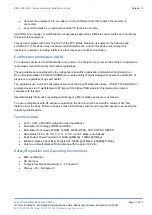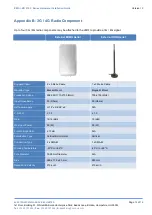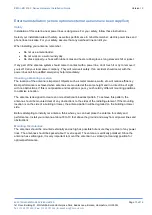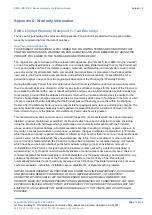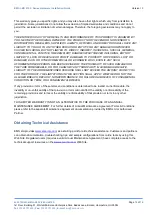
EMS i-MO 210 C Series Hardware Installation Guide
Version
1.0
ELECTRONIC MEDIA SERVICES LIMITED
1st Floor, Building 51, Whitehill & Bordon Enterprise Park, Budds Lane, Bordon, Hampshire, GU35 0FJ
Tel:
01428 751655 |
Fax:
01428 751654 |
E-mail:
Page
11
of
16
•
Connect the equipment into an outlet on a circuit different from that to which the receiver is
connected.
•
Consult the dealer or an experienced radio/TV technician for help.
CAUTION: Any changes or modifications not expressly approved by EMS Ltd could
void the user’s authority
to operate the equipment.
This device complies with Parts 15 and 27 of the FCC Rules. Operation is subject to the following two
conditions: (1) This device may not cause harmful interference, and (2) this device must accept any
interference received, including interference that may cause undesired operation.
Certification Information (SAR)
Your wireless device is a radio transmitter and receiver. It is designed not to exceed the limits for exposure to
radio waves recommended by international guidelines.
These guidelines are developed by the independent scientific organization International Commission on
Non-ionizing Radiation Protection (ICNIRP) and include safety margins designed to assure the protection of
all persons, regardless of age and health.
The guidelines use a unit of measurement known as the Specific Absorption Rate, or SAR. The SAR limit for
wireless devices is 2.0 watts/kilogram (W/kg) and the highest SAR value for this device when tested
complies with this limit.
Important safety information regarding radio frequency (RF) radiation exposure is as follows:
To ensure compliance with RF exposure guidelines, the device must be used with a minimum of 2.5cm
distance from the body. Failure to observe these instructions could result in your RF exposure exceeding the
relevant guideline limits.
Technical Data
•
2412 ~ 2472, 2484 MHz (subject to local regulations)
•
Modulation Technology OFDM and DSSS
•
Modulation Techniques 64QAM, 16QAM, QPSK, BPSK, CCK, DQPSK, DBPSK
•
Data Rates 54, 48, 36, 18,12, 9, 11, 6, 5.5, 2, and 1 Mbps, auto fallback
•
Peak Output Power Targeted at 14dBm @54Mbps, 18dBm @11Mbps
•
Minimum Receive Sensitivity Targeted at -70dBm @54Mbps; -80dBm@11Mbps
•
Antenna - default attached Stub antenna with the gain of 2.2 dBi.
Safety Regulation and Operating Environment
•
EMC certification
•
CE (Europe)
•
Temperature Range Operating: 0 ~ 45 degree C,
•
Storage: -20 ~ 60 degree C


